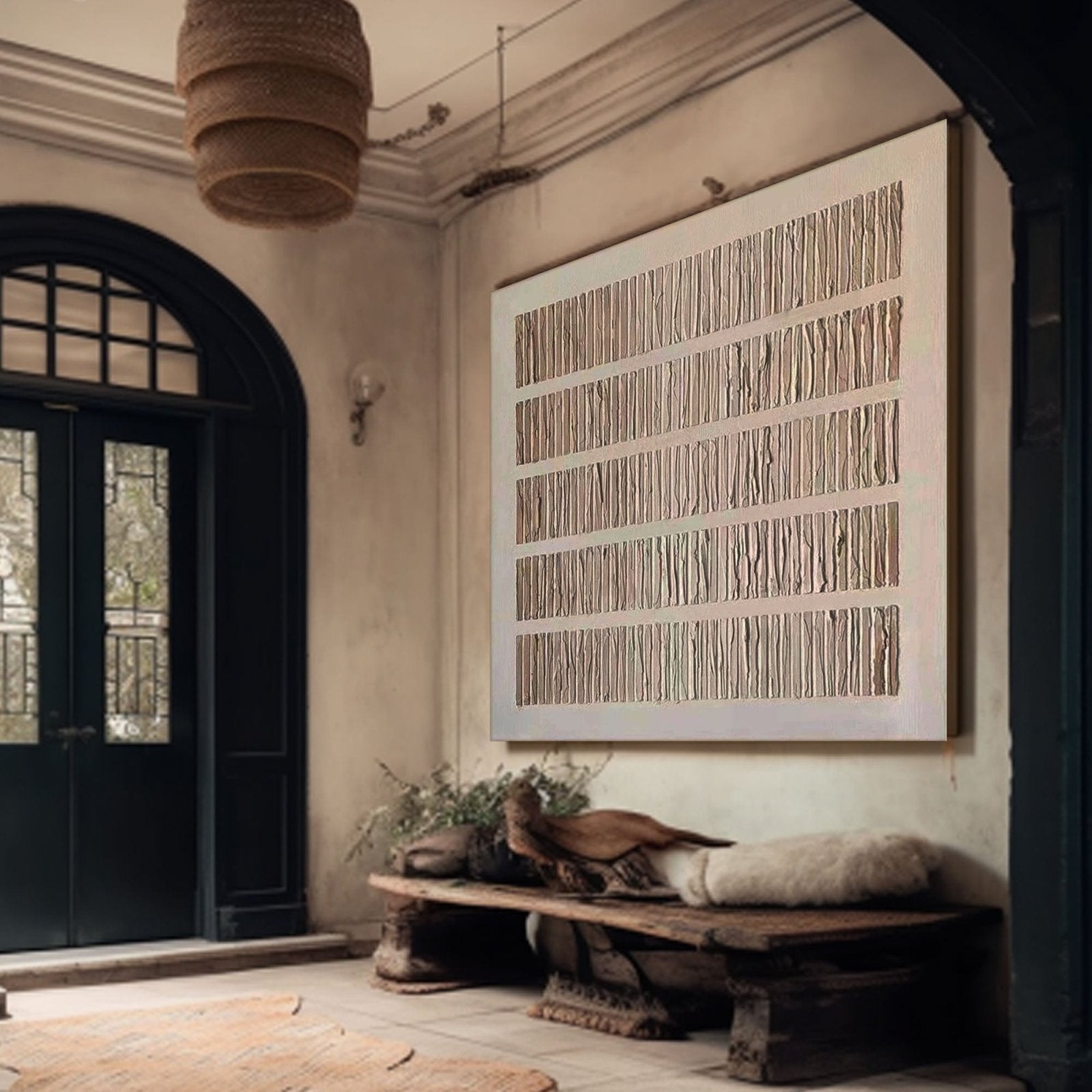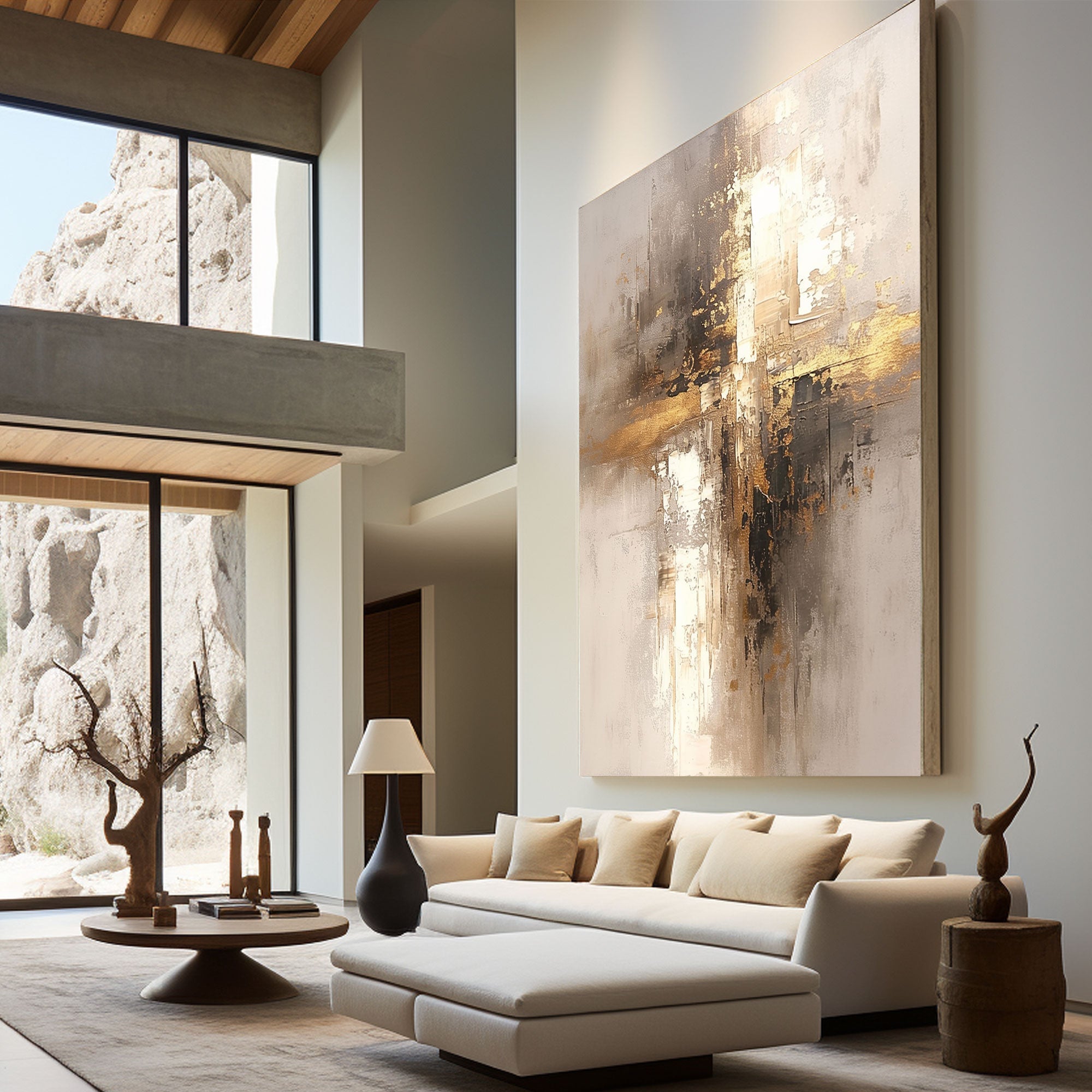Article: What is Wabi Sabi Art?

What is Wabi Sabi Art?
Cattagory:
Introduction:
1. The Origins of Wabi Sabi
2. Key Characteristics of Wabi Sabi Art
3. How Wabi Sabi Influences Oil Painting
4. The Emotional Impact of Wabi Sabi Art
5. Wabi Sabi Art in Contemporary Oil Painting
6. How to Create Wabi Sabi-Inspired Oil Paintings
Conclusion
Introduction
Wabi Sabi is a Japanese aesthetic that celebrates the beauty of imperfection, transience, and simplicity. Rooted in Zen Buddhism and Japanese cultural traditions, this concept has significantly influenced various art forms, particularly painting. Wabi Sabi has found a place in modern artistic expression, inspiring artists to embrace imperfections and find beauty in the fleeting nature of life. In this article, we will delve deeper into the core of Wabi Sabi art, explore how it influences oil painting techniques, and guide you on how to create Wabi Sabi-inspired artworks.

1. The Origins of Wabi Sabi
The terms "Wabi" and "Sabi" originate from Japanese culture and together define the aesthetic of Wabi Sabi.
-
Wabi traditionally refers to the appreciation of the simple, rustic beauty found in objects or scenes that are unpretentious, raw, or unsophisticated. It can also imply a sense of quiet solitude or melancholy, a concept that transcends material wealth.
-
Sabi refers to the beauty that comes with age or the patina of wear and tear. It celebrates the natural process of decay and how objects, over time, acquire a certain charm that can only be achieved through imperfection and aging.
Together, Wabi Sabi celebrates the impermanence of life, the acceptance of things as they are, and the beauty of aging and decay. Its influence on Japanese art can be traced back to the Zen Buddhist tea ceremony, where the focus was on appreciating the imperfect and the transient nature of life. Over the centuries, Wabi Sabi has become a guiding philosophy in Japanese aesthetics, spreading its influence across design, architecture, and painting.
2. Key Characteristics of Wabi Sabi Art
Wabi Sabi is a multifaceted aesthetic, but it can be distilled into a few essential qualities that define its beauty:
-
Imperfect Beauty: Wabi Sabi rejects perfection and embraces the beauty of asymmetry, irregularity, and imperfections. It celebrates flaws and the natural wear of objects, whether through cracks, unevenness, or aged surfaces.
-
Transience: Wabi Sabi art reflects the impermanence of life. It acknowledges the passage of time and often portrays scenes or objects in a state of decay, symbolizing the fleeting nature of existence. A simple flower or a cracked teapot in Wabi Sabi art can speak volumes about the transience of beauty.
-
Simplicity: Wabi Sabi art is minimalist. It favors quiet, unadorned beauty over extravagant or ornate designs. The focus is on the essentials, on what is natural and understated, rather than elaborate decoration.
-
Natural Elements: Wabi Sabi often incorporates natural materials or textures, such as wood, stone, clay, and organic pigments. These elements evoke a connection to the earth, the seasons, and the cycles of life, reinforcing the themes of impermanence and simplicity.
3. How Wabi Sabi Influences Oil Painting
Wabi Sabi’s influence on oil painting is profound. Traditional oil painting techniques can perfectly embody the principles of this aesthetic.
-
Embracing Texture: Oil paintings naturally lend themselves to a textured surface, and Wabi Sabi celebrates this. The rough brushstrokes, layered textures, and impasto techniques found in oil painting can create an atmosphere of raw, tactile beauty. These imperfections add depth and interest, perfectly mirroring the Wabi Sabi philosophy.
-
Aging and Imperfection: In Wabi Sabi-inspired oil paintings, techniques that simulate aging and wear, such as crackling, distressed finishes, or muted colors, can evoke a sense of time and history. By incorporating visual decay, an oil painting can tell a story about the passage of time and the beauty that emerges from imperfection.
-
Use of Earth Tones and Natural Pigments: Earthy tones like ochre, umber, sienna, and soft greens often dominate Wabi Sabi art. These colors reflect the natural world, providing warmth and a sense of grounding. In oil painting, these pigments can be used to create works that feel organic, timeless, and intimately connected to the earth.

4. The Emotional Impact of Wabi Sabi Art
One of the most profound aspects of Wabi Sabi is its emotional resonance. Wabi Sabi art is designed to be meditative and contemplative, evoking a sense of calm and acceptance.
-
Acceptance of Imperfection: Wabi Sabi encourages viewers to embrace the flaws and imperfections in art, and by extension, in life itself. This is a refreshing departure from the pursuit of idealized perfection seen in much of Western art and culture.
-
Finding Beauty in the Everyday: Wabi Sabi art often takes inspiration from the simplest, most mundane aspects of life. A weathered pot, an empty landscape, or a wilting flower can hold deep significance. Through this, Wabi Sabi teaches that there is beauty to be found in the ordinary and the fleeting.
5. Wabi Sabi Art in Contemporary Oil Painting
In contemporary art, Wabi Sabi has found a place within both traditional and modern oil painting. Many contemporary artists are inspired by the concept of imperfection and use Wabi Sabi principles to create works that explore themes of aging, decay, and the transient nature of life.
- Artists like Kazuya Takaoka and Hiroshi Senju incorporate Wabi Sabi principles in their work, using the natural world and the passage of time to create pieces that reflect beauty in imperfection.
- Abstract Expressionism and Minimalism in contemporary oil painting often align with Wabi Sabi’s aesthetic, where bold, raw brushstrokes, unrefined textures, and a muted palette echo the philosophy of accepting life as it is.
6. How to Create Wabi Sabi-Inspired Oil Paintings
For artists wishing to create Wabi Sabi-inspired oil paintings, here’s a guide to help you get started:
-
Choosing Materials: Select high-quality, textured canvases or panels that will enhance the tactile nature of your work. Use natural pigments or earth tones that will evoke a sense of grounding and connection to the natural world.
-
Techniques for Texture: Embrace impasto techniques to build up texture, allowing the surface of the painting to become part of the artwork’s beauty. Use palette knives or brushes to create rough, expressive marks.
-
Aging Effects: To achieve the Wabi Sabi look, experiment with aging techniques. You can use crackle mediums or allow the paint to dry in layers, creating an effect that simulates the passage of time. Add subtle imperfections, such as chipped paint or uneven textures, to give the piece character and history.
-
Imperfection in Composition: When composing your painting, think about asymmetry. Avoid perfectly balanced or symmetrical designs. Allow the elements of your painting to breathe and feel organic, without forcing them into a rigid structure.
Conclusion
Wabi Sabi offers a unique and refreshing approach to art, one that celebrates imperfection, impermanence, and simplicity. In the world of oil painting, this aesthetic allows artists to explore the beauty of age, texture, and natural decay, creating works that evoke deep emotional resonance and a connection to the fleeting nature of life. Whether you are an artist or an art lover, embracing Wabi Sabi offers an opportunity to see beauty in places where perfection once reigned. By learning from this timeless philosophy, we can begin to see art—and life—through a more accepting, meditative, and beautiful lens.







